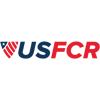You can’t charm your way to a government contract in 2025, and that’s a good thing. Awards aren’t decided over coffee or based on who knows whom. Instead, they’re determined by merit, skills, and the ability to meet the requirements better than anyone else. That levels the playing field. Now, if you can prove to the right people that you’re reliable, compliant, and ready to deliver, you can compete head-to-head with larger, more established vendors.
In 2025, personal rapport with a contracting officer isn’t the ticket to a win. KOs are bound by strict regulations, protests are at an all-time high, and procurement integrity rules are enforced aggressively. In fact, the appearance of favoritism can remove you from a competition.
Where the influence really is
The leverage point is almost always before a solicitation is posted, with the program or technical staff shaping the requirement. These teams care about reducing risk, hitting performance goals, and avoiding vendor problems. If they’ve seen you deliver measurable results, they’re more likely to shape needs that align with your capabilities.
Strategic additions to your relationship plan
-
Incumbent intelligence – Research who holds the current contract, their performance record, and whether there’s an appetite for change. This gives you positioning advantages without badmouthing the incumbent. FPDS.gov, USAspending.gov, and past performance reports are your starting points.
-
Protest landscape awareness - As more awards are protested, agencies are writing solicitations to be more defensible. That means less flexibility once requirements are set and a stronger preference for vendors who meet every requirement.
-
Performance-based contracting trends – Agencies are shifting from labor-hour buys to outcome-focused contracts. Relationships now center on your ability to prove you can hit performance metrics, not just provide staff.
-
Vehicle-specific targeting – Major contracts like OASIS+ and CIO-SP4 are shaping buying in IT and professional services. If you’re not on these vehicles, building relationships with primes and ordering activity contacts is essential.
-
Small business coordination – SBA size standard changes and evolving set-aside categories create teaming opportunities. Relationships with complementary small businesses can be more valuable than direct agency outreach.
-
Congressional influence awareness – Without lobbying or politics, you can still track appropriations priorities and oversight hearings to anticipate agency focus areas.
Tactical ways to make connections
-
Small Business Offices (OSDBUs) – Tailor your capability statement to their mission. Show how you solve their problems, not just what you sell.
-
Industry days and agency events – Meet small business specialists, learn upcoming needs, and follow up with targeted outreach.
-
Track expiring set-aside contracts – Especially 8(a), HUBZone, or SDVOSB. Position yourself early for limited competitions or sole-source opportunities.
-
On-site presence through subcontracting – Being on the ground builds trust faster than any cold call.
Measure your relationship ROI
Treat relationship building like a marketing funnel. Track which activities actually lead to pipeline movement – introductions, teaming agreements, RFP invites, or awards. Stop spending time on low-return activities and double down on those that convert.
Risk and compliance guardrails
Always operate within ethics and procurement integrity rules. Avoid anything that could create an organizational conflict of interest. Build relationships to share capabilities and understand agency needs, not to influence an active competition.
For service companies like janitorial firms
Skip the cold KO emails. Instead, identify your top 10 target contracts, learn who’s delivering them now, and connect with small business reps and program staff early. Use your differentiators – whether it’s green cleaning, rapid response, or unique staffing coverage – to position for the follow-on.
What’s Next?
If you want a targeted relationship-building plan tied to real opportunities, USFCR can map your target agencies, find decision makers, and build a compliant engagement strategy that leads to awards. Contact us to start positioning for your next win.
FAQ
How do I research incumbents and their performance?
Check FPDS.gov, USAspending.gov, and CPARS reports for current award holders, contract values, and past performance ratings.
How can I measure if my relationship-building is working?
Track outcomes like follow-up meetings, teaming offers, and RFP invites. If an activity isn’t leading to pipeline movement, reallocate your efforts.
What is performance-based contracting?
It’s an approach where agencies focus on measurable results instead of hours worked or staff provided. Your ability to deliver outcomes is the relationship anchor.
View full FAQ page
Top Articles
The 17 Most Common Types of Government Contracts Explained
Writing a Winning Capabilities Statement in 2025





